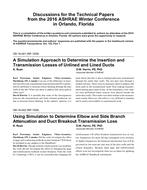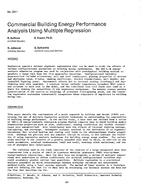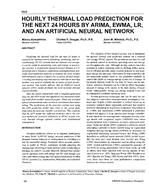Click here to purchase
Until recently, most planners at military installations addressed energy systems for new facilities on an individual facility basis without consideration of community-wide goals relevant to energy sources, renewables, storage, or future energy generation needs. Building retrofits of public buildings typically do not address energy needs beyond the minimum code requirements making it difficult, if not impossible, to achieve community-level targets on a building-by-building basis. Planning on the basis of cost and general reliability may also fail to deliver community-level resilience. For example,many building code requirements focus on hardening tospecific threats, but in a multi-building community, only a few of these buildings may be mission-critical. Over the past two decades, the frequency and duration of regional power outages and water utility disruptions from weather, man-made events,and aging infrastructure have increased. Major disruptions ofelectric and thermal energy have degraded critical mission capabilities and caused significant economic impacts. In 2016,the U.S. Department of Defense issued guidance that each Service (Army, Navy, Air Force, Marines) complete comprehensive energy plans for the installations that consumed 75%of total building energy. Guidance was updated in 2017 toinclude metrics for energy resilience, and in some cases, water.This paper describes how community level quantitative andqualitative resilience analysis and metrics have been incorporated into community energy and water planning best practices for military installations in three geographically diverse locations. It is based on research performed under the International Energy Agency’s “Energy in Buildings and Communities Program Annex 73,” focusing on development ofguidelines and tools that support the planning of Net ZeroEnergy Resilient Public Communities as well as research performed under the Department of Defense Environmental Security Technology Certification Program project EW18-D1-5281, “Technologies Integration to Achieve Resilient, Low-Energy Military Installations.” The first case study reviews progress made on an energy and water planning study conducted at Fort Bliss, Texas. The second and third describesplanning conducted at Fort Bragg, North Carolina and the Joint Region Marianas, Guam, respectively, under the updatedguidance from 2017 regarding energy and water resilience.Analysis methods, key metrics, and key infrastructure and operational constraints are described, as well as technical, economic and business concepts used during the planning process.
Citation: 2020 Winter Conference, Orlando, FL Technical Papers
Product Details
- Published:
- 2020
- Number of Pages:
- 21
- Units of Measure:
- Dual
- File Size:
- 1 file , 3.4 MB
- Product Code(s):
- D-OR-20-022


